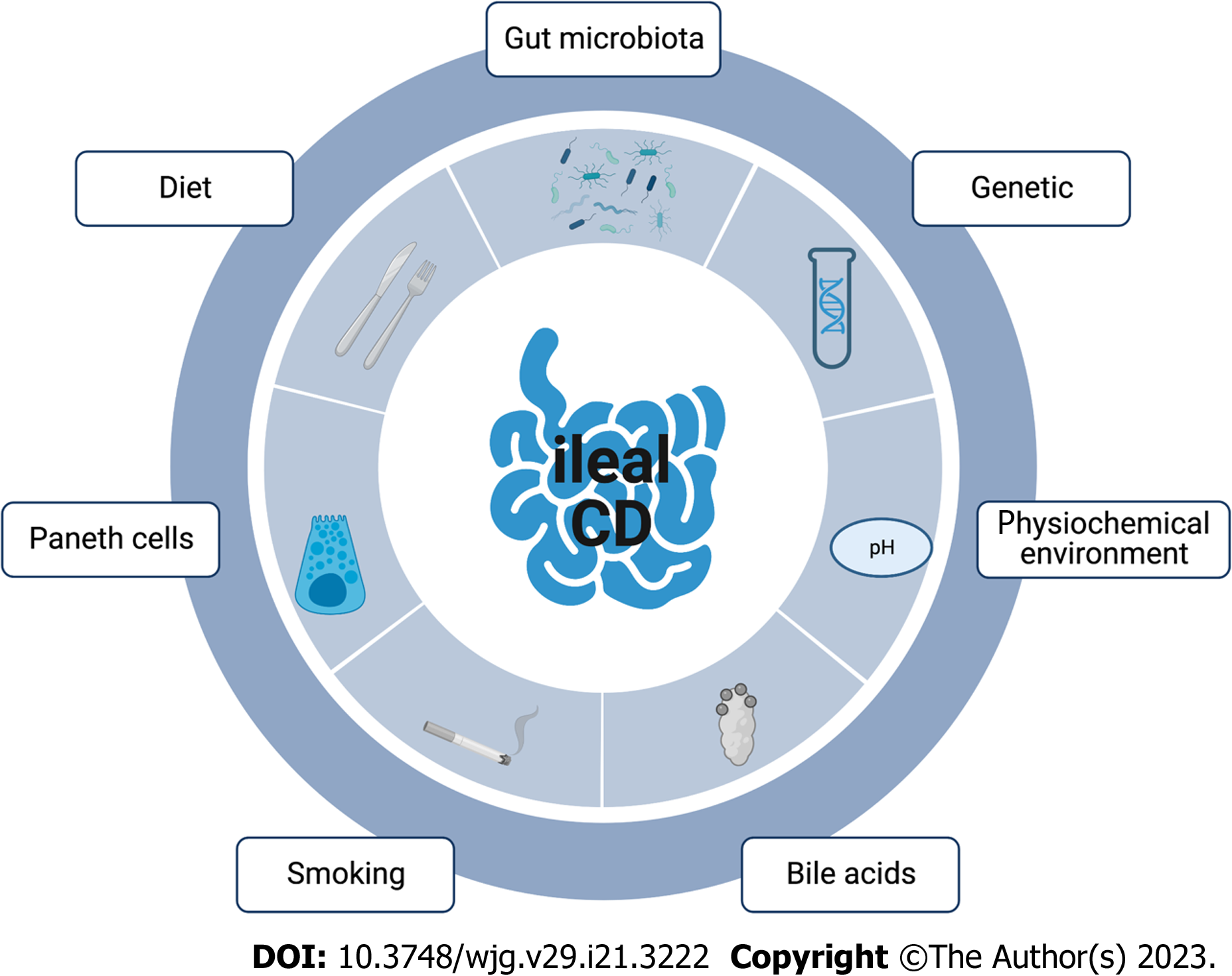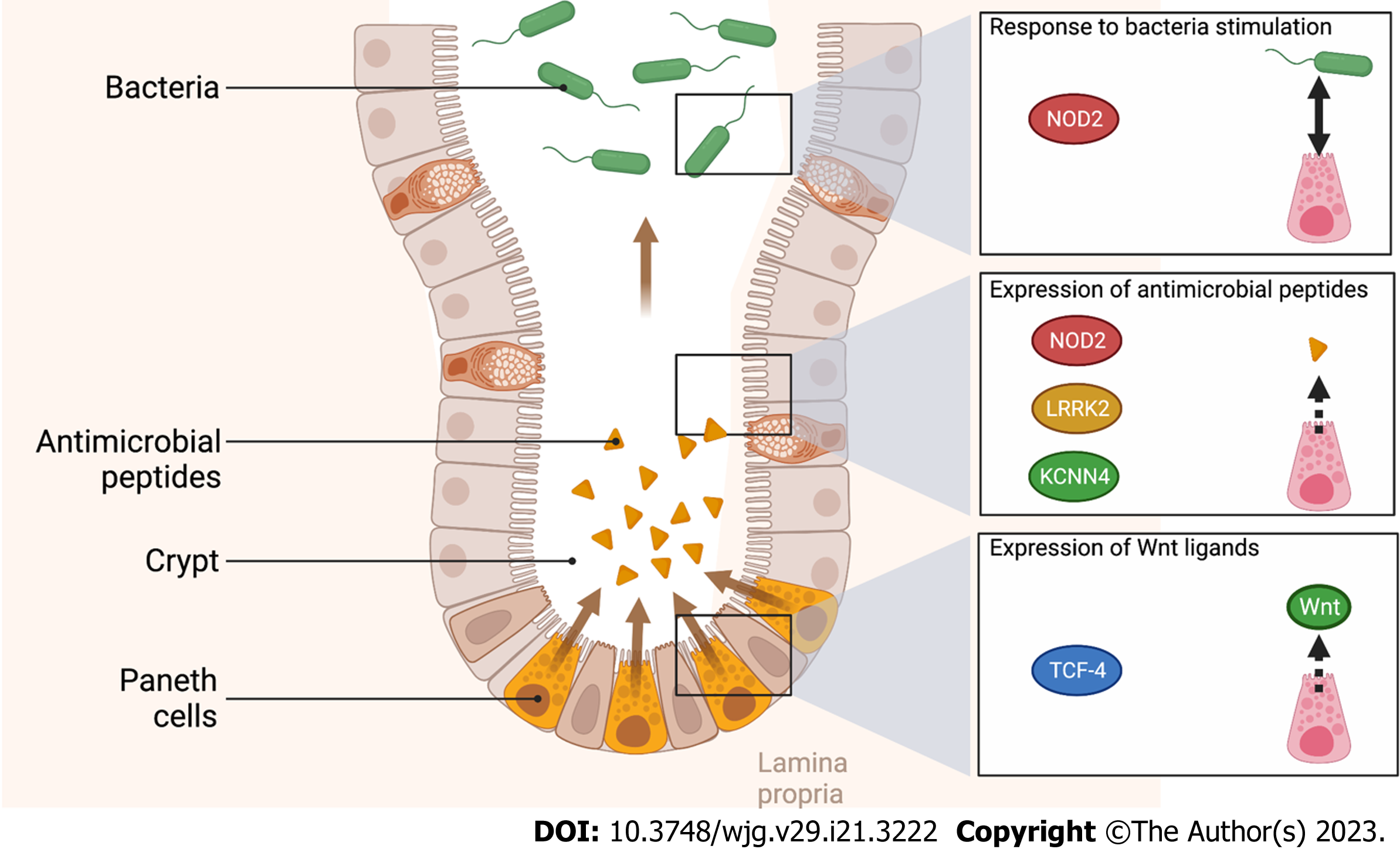Copyright
©The Author(s) 2023.
World J Gastroenterol. Jun 7, 2023; 29(21): 3222-3240
Published online Jun 7, 2023. doi: 10.3748/wjg.v29.i21.3222
Published online Jun 7, 2023. doi: 10.3748/wjg.v29.i21.3222
Figure 1 Potential factors involved in ileal Crohn’s disease.
While Crohn’s disease (CD) occurs in any part of the gastrointestinal tract, the ileum is frequently involved. Potential factors involved in ileal CD are genetic susceptibility genes and most of these genes are associated with Paneth cell dysfunction. Environmental factors may also be involved such as diet, gut microbiota and smoking. Diet can modulate the composition of bile acids and gut microbiota, which in turn affect the susceptibility of the ileum to inflammation. Created with BioRender.com. CD: Crohn’s disease.
Figure 2 Putative role of gene susceptibility in Paneth cell dysfunction.
Paneth cells are secretory epithelial cells located in the intestinal crypts. Paneth cells produce antimicrobial peptides in response to bacterial components and support stem cell function through Wnt signalling. Most of the susceptibility genes associated with ileal Crohn’s disease (CD) involve Paneth cell dysfunction. NOD2 and LRRK2 genes are expressed in Paneth cells and their deficiency in ileal CD modulates the expression of antimicrobial peptides such as alpha-defensins or lysozyme. Similarly, the reduction of the Wnt-signalling pathway transcription factor Tcf-4 is associated with a predisposition for ileal CD and leads to a reduced expression of Paneth cell defensins. The blocking of calcium-activated potassium channel protein (KCNN4) inhibits mouse Paneth cell secretion in response to bacterial stimulation. Created with BioRender.com.
- Citation: Richard N, Savoye G, Leboutte M, Amamou A, Ghosh S, Marion-Letellier R. Crohn’s disease: Why the ileum? World J Gastroenterol 2023; 29(21): 3222-3240
- URL: https://www.wjgnet.com/1007-9327/full/v29/i21/3222.htm
- DOI: https://dx.doi.org/10.3748/wjg.v29.i21.3222










